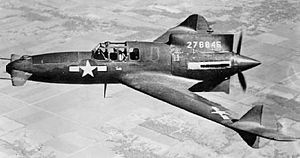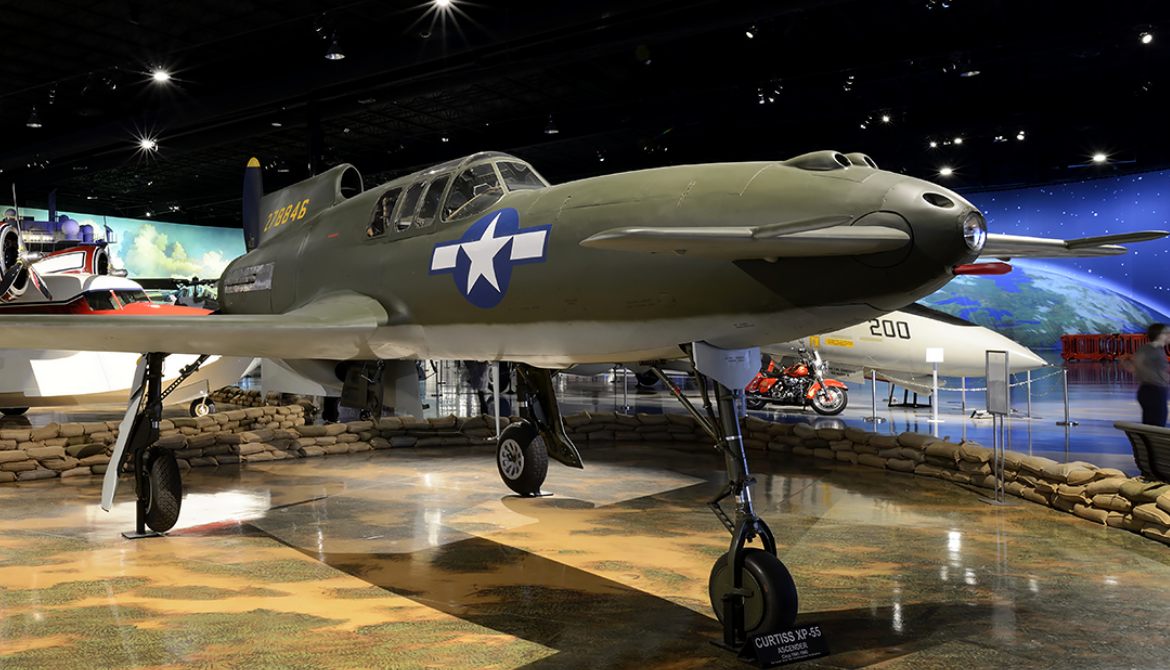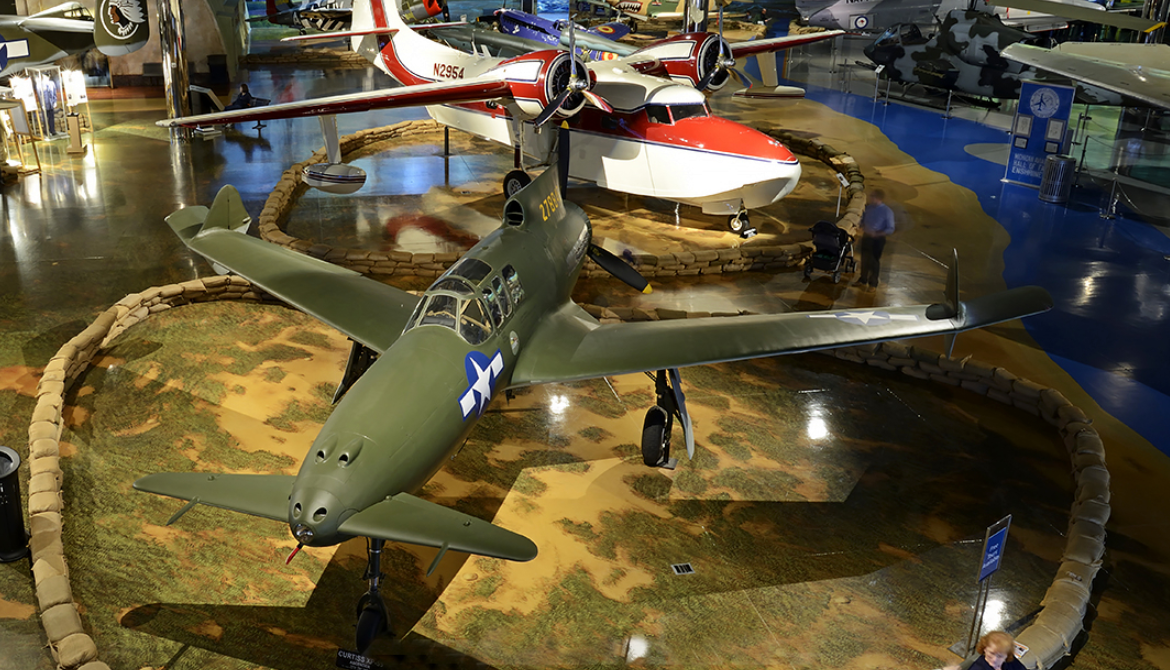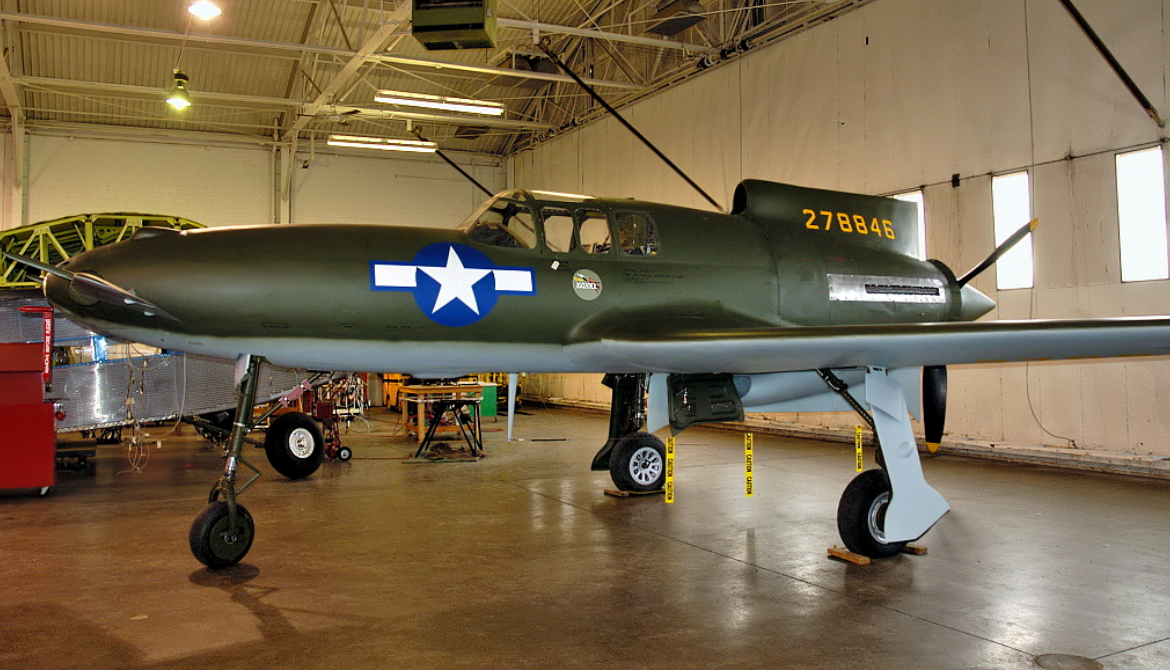.
History Curtiss Wright
XP-55 Ascender First Flight 19 July 1943
Status Canceled At Flight-Test Stage

The Curtiss-Wright XP-55 Ascender (company designation CW-24) is a 1940s United States prototype fighter aircraft built by Curtiss-Wright. Along with the Vultee XP-54 and Northrop XP-56, it resulted from United States Army Air Corps proposal R-40C issued on 27 November 1939 for aircraft with improved performance, armament, and pilot visibility over existing fighters; it specifically allowed for unconventional aircraft designs
An unusual design for its time, it had a canard configuration, a rear-mounted engine, swept wings, and two vertical tails. Because of its pusher design, it was satirically referred to as the "Ass-ender". Like the XP-54, the Ascender was designed for the Pratt & Whitney X-1800 engine, but was redesigned after that engine project was canceled. It was also the first Curtiss fighter aircraft to use tricycle landing gear.
Design and development

June 1940, the Curtiss-Wright company received an Army contract for preliminary engineering data and a powered wind tunnel model. The designation P-55 was reserved for the project. The USAAC was dissatisfied with the results of these tests. Accordingly, Curtiss-Wright built a flying full-scale model they designated CW-24B. The flying testbed was powered by a 275 hp (205 kW) Menasco C68-5 inline engine. It had a fabric-covered, welded steel tube fuselage with a wooden wing. The undercarriage was non-retractable.
July 1942, the United States Army Air Forces issued a contract for three prototypes under the designation XP-55. Serial numbers were 42-78845 through 42-78847. During this time, the Pratt & Whitney X-1800 H-block sleeve valve engine was delayed, and was eventually canceled. Curtiss decided to switch to the 1,000 hp (750 kW) Allison V-1710 (F16) liquid-cooled inline engine because of its proven reliability. Armament was to be two 20 mm (0.79 in) cannon and two 0.50 in (12.7 mm) machine guns. During the mock-up phase, engineers switched to the 1,275 hp (951 kW) V-1710-95. The 20 mm cannons were also replaced by 0.50 in machine guns.
0
KmCeiling
0
KmCombat RANGE
0
Km/hAircraft Speed
0
Max Crew
Photo Gallery
Curtiss Wright
XP-55 Ascender
First Flight 19 July 1943
Status
Canceled At Flight-Test Stage


Curtiss Wright XP-55 Ascender
General Info
-
-
- Crew: One (pilot)
- Length: 29 ft 7 in (9.02 m)
- Wingspan: 40 ft 7 in (12.37 m)
- Height: 10 ft 0 in (3.05 m)
- Wing area: 235 sq ft (21.8 m2)
-
Powerplant
-
-
- Empty weight: 6,354 lb (2,882 kg)
- Gross weight: 7,710 lb (3,497 kg)
- Max takeoff weight: 7,930 lb (3,597 kg)
- Powerplant: 1 × Allison V-1710-95 liquid-cooled V12 engine, 1,275 hp (951 kW)
-
Performance
- Maximum speed: 390 mph (630 km/h, 340 kn) at 19,300 feet (5,900 m)
- Range: 635 mi (1,022 km, 552 nmi)
- Service ceiling: 34,600 ft (10,500 m)
- Wing loading: 32.8 lb/sq ft (160 kg/m2)
- Power/mass: 0.16 hp/lb
Armament
- Guns: 4 × 0.50 in (12.7 mm) machine guns in the nose
.
Links to Youtube & Others
The Curtiss Wright XP-55 Ascender was a truly unique and innovative American prototype fighter aircraft designed during World War II.
Curtiss Wright
XP-55 Ascender
The Curtiss-Wright XP-55 Ascender (company designation CW-24) is a 1940s United States prototype fighter aircraft.
Youtube Link
The Curtiss Wright XP-55 Ascender was a truly unique and innovative American prototype fighter aircraft designed during World War II












